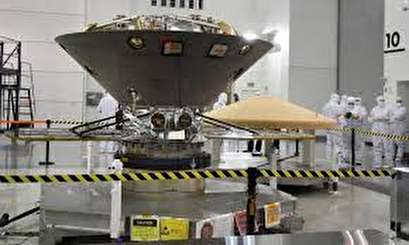TEHRAN, November 25 _ NASA’s first robotic lander designed to study the deep interior of a distant world hurtled closer to Mars on course for a planned touchdown on Monday after a six-month voyage through space.
 TEHRAN, Young Journalists Club (YJC) _ NASA’s first robotic lander designed to study the deep interior of a distant world hurtled closer to Mars on course for a planned touchdown on Monday after a six-month voyage through space.
TEHRAN, Young Journalists Club (YJC) _ NASA’s first robotic lander designed to study the deep interior of a distant world hurtled closer to Mars on course for a planned touchdown on Monday after a six-month voyage through space.
Traveling 301 million miles (548 million km) from Earth, the Mars InSight spacecraft was due to reach its destination on the dusty, rock-strewn surface of the Red Planet at about 3 p.m. EST (2000 GMT).
If all goes according to plan, InSight will streak into the pink Martian sky at 12,000 miles per hour (19,310 kilometers per hour). Its 77-mile descent to the surface will be slowed by atmospheric friction, a giant parachute and retro rockets. When it lands 6-1/2 minutes later, it will be traveling a mere 5 mph (8 kph).
The stationary probe, which launched from California in May, will then pause for 16 minutes for the dust to settle, literally, around the landing site before its disc-shaped solar arrays unfurl to provide power.
The mission control team at NASA’s Jet Propulsion Laboratory (JPL) near Los Angeles hopes to get real-time electronic confirmation of the spacecraft’s safe arrival from miniature satellites that were launched along with InSight and will fly past Mars.
The JPL controllers also expect to receive a photo of the probe’s surroundings on the flat, smooth Martian plain close to the planet’s equator called the Elysium Planitia.
The site is roughly 373 miles (600 km) from the 2012 landing spot of the car-sized Mars rover Curiosity, the last spacecraft sent to the Red Planet by NASA.
The smaller, 880-pound (360 kg) InSight - its name is short for Interior Exploration Using Seismic Investigations, Geodesy and Heat Transport - marks the 21st U.S.-launched Martian exploration including the Mariner fly-by missions of the 1960s. Nearly two dozen other Mars missions have been sent from other nations.
Source: Reuters
Related News
Tags
Your Comment